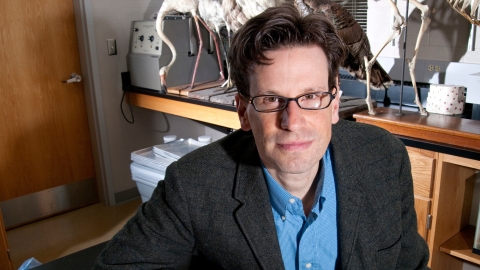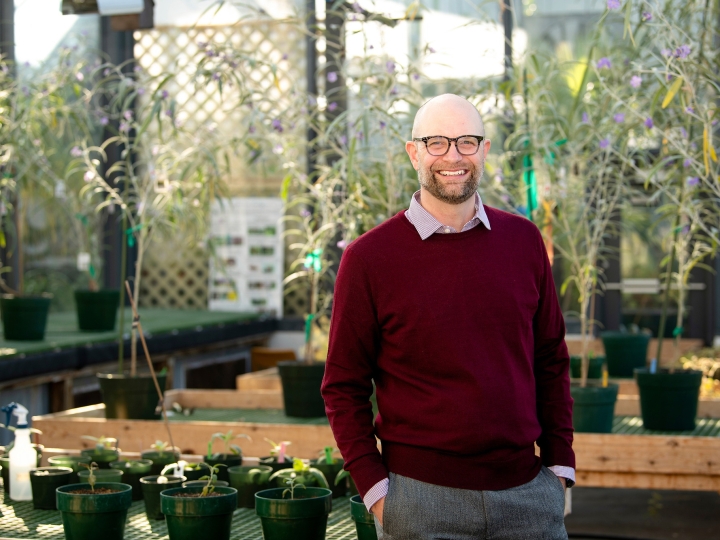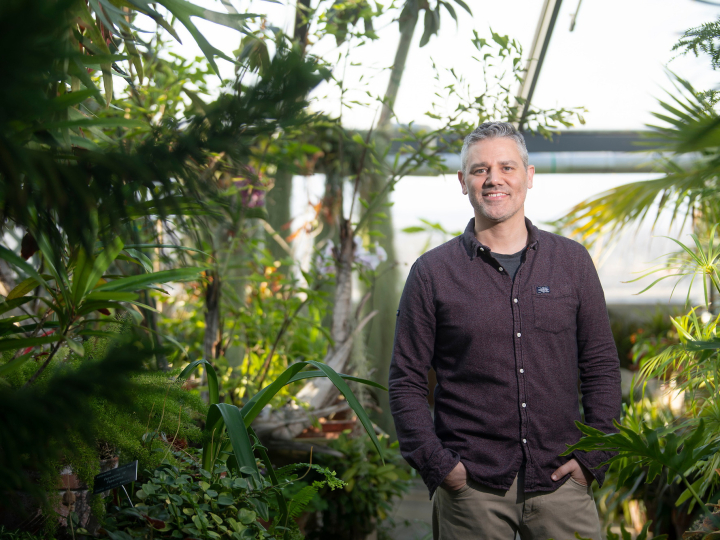
Bucknell’s Cassidy Confirms Effectiveness of COVID Vaccination Plans in Study
February 26, 2021
Professor Thomas Cassidy, mathematics, is co-author of the new study. Photo by Bucknell University
A new study, co-authored by a Bucknell University mathematics professor, uses data from the United States, Germany and South Korea to show that vaccinating the oldest population first will save both the most lives and the most years of remaining life overall, two often-competing measures in epidemiology and public health.
Bucknell Professor Thomas Cassidy, mathematics, joined two mathematical demographers from the University of California, Berkeley — Joshua Goldstein and Kenneth Wachter — as authors of the study, which was published Thursday in Proceedings of the National Academy of Sciences, the second most cited scientific journal in the world.
Intuition suggests that there is a trade-off between maximizing the number of lives saved and maximizing the years of future life saved, but after crunching the numbers, the researchers determined this intuition is wrong.
"It appears to be an ethical dilemma. Should we try to save the most people, or save the most years of remaining life?" says Cassidy. "It's a trade off people don’t want to think about, but those in public health sometimes have to weigh one versus the other. With COVID-19, both goals are aligned — prioritizing older populations saves the most lives and preserves more years of life remaining."
According to the study, the age patterns of COVID-19 mortality suggest that vaccinating the oldest individuals first saves the most lives and, surprisingly, also maximizes years of remaining life expectancy in the population at large. The researchers demonstrate this relationship empirically with mathematical analysis of life tables from the three nations studied.
The researchers calculate that assuming equal effectiveness over age, vaccines given to 90-year-olds would save three times more lives than would the same doses given to 80-year-olds, and more than 80 times as many lives as if those doses were given to 50-year-olds.
In terms of maximizing person-years of remaining life, they calculate that vaccinating a 90-year-old in the U.S. would be expected to save twice as many person-years as vaccinating a 75-year-old, and six times as many as vaccinating a 50-year-old.
"This result is not an accidental feature of these particular countries. Rather, it is a previously unknown general mathematical property valid for many of the mortality models favored by demographers," Cassidy says. "Of course, a comprehensive vaccination plan will consider transmission dynamics and other priorities beyond just age, but our result lends support to plans that first vaccinate those facing the greatest risk from COVID-19."
The researchers wrote that in the case of COVID-19, a general property of life tables wipes away the potential conflict between saving lives and maximizing future years of life. They conclude, "Giving COVID-19 vaccines to those facing the highest risk of death from the disease accomplishes both of these goals."

